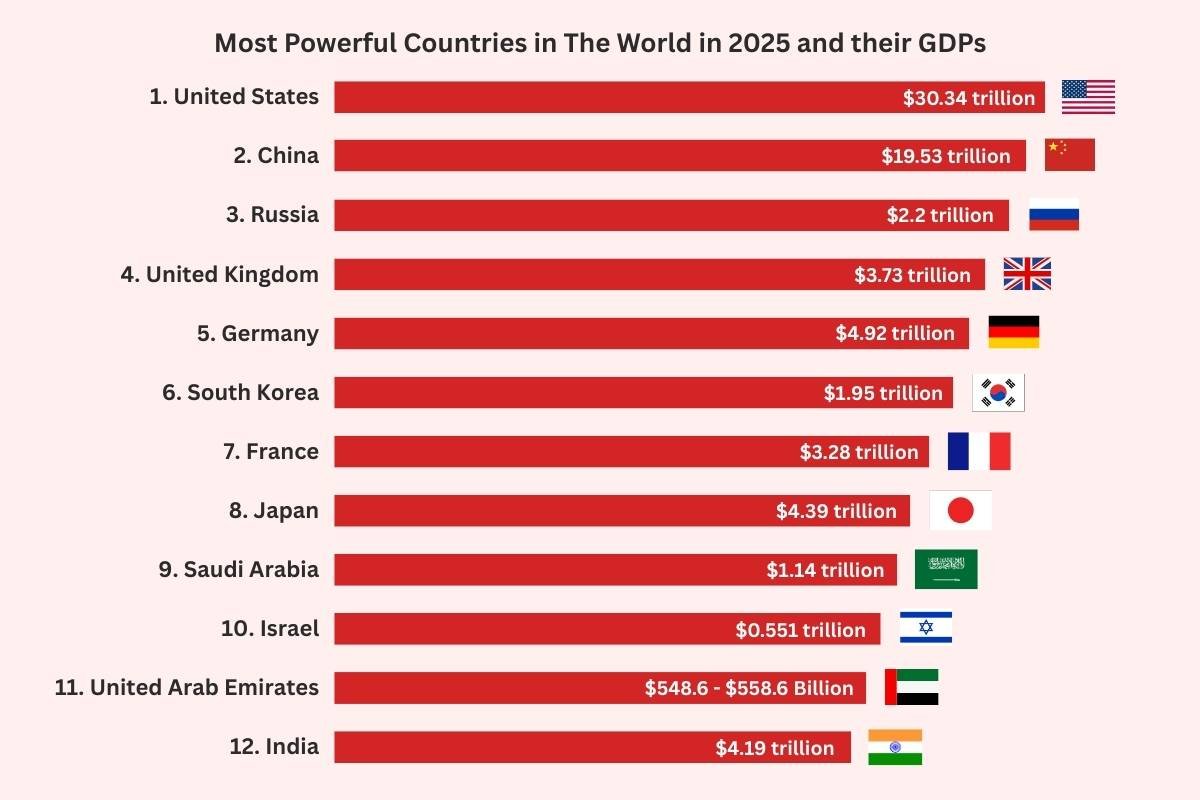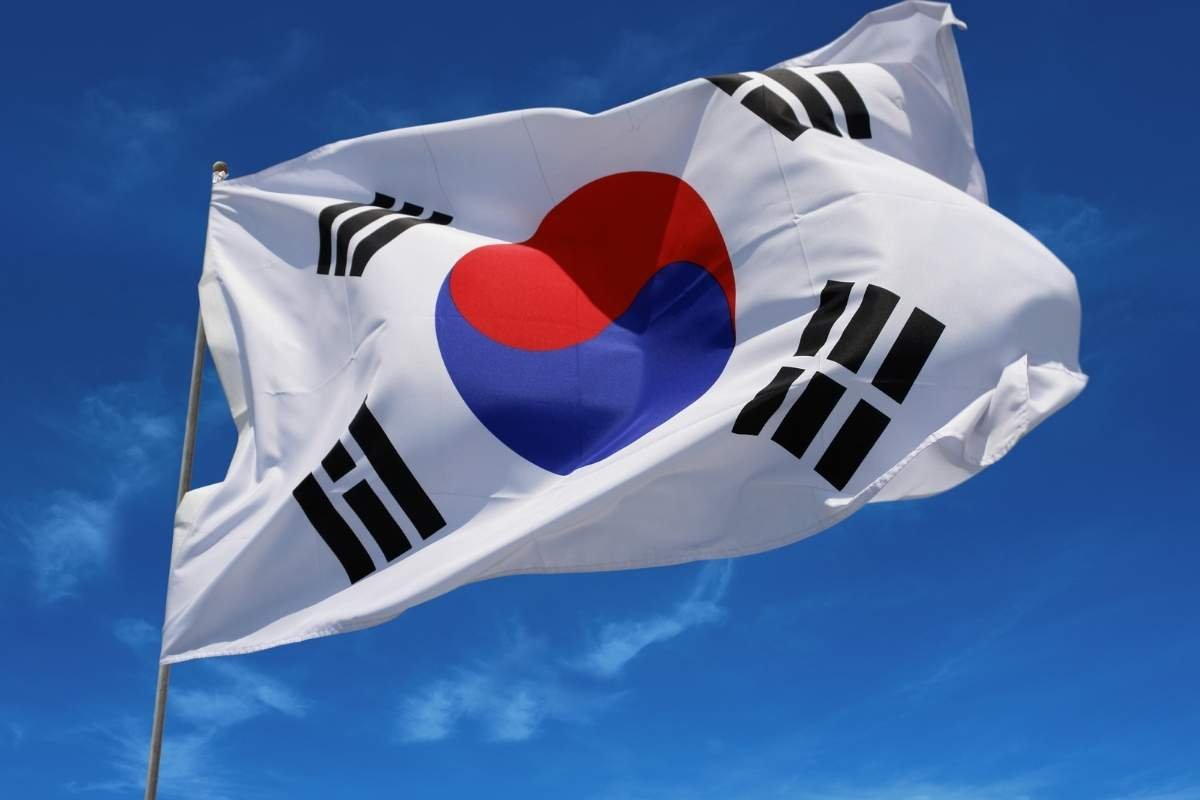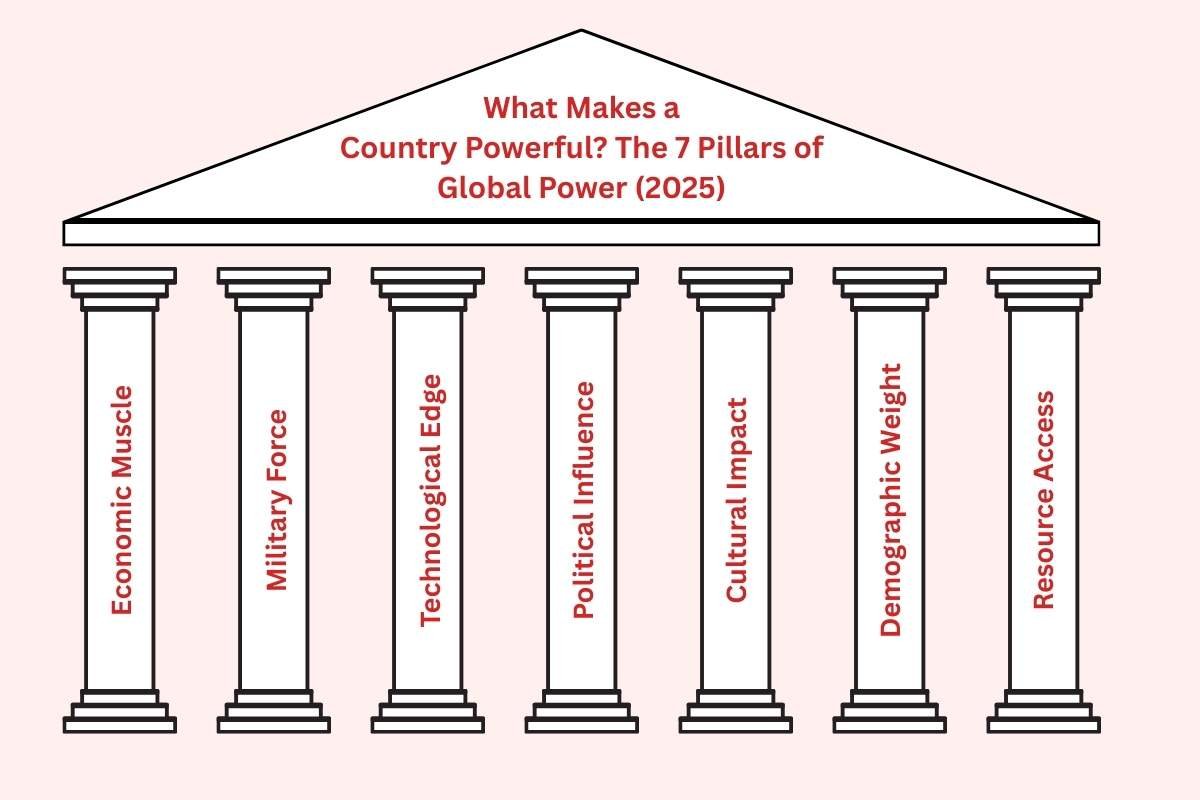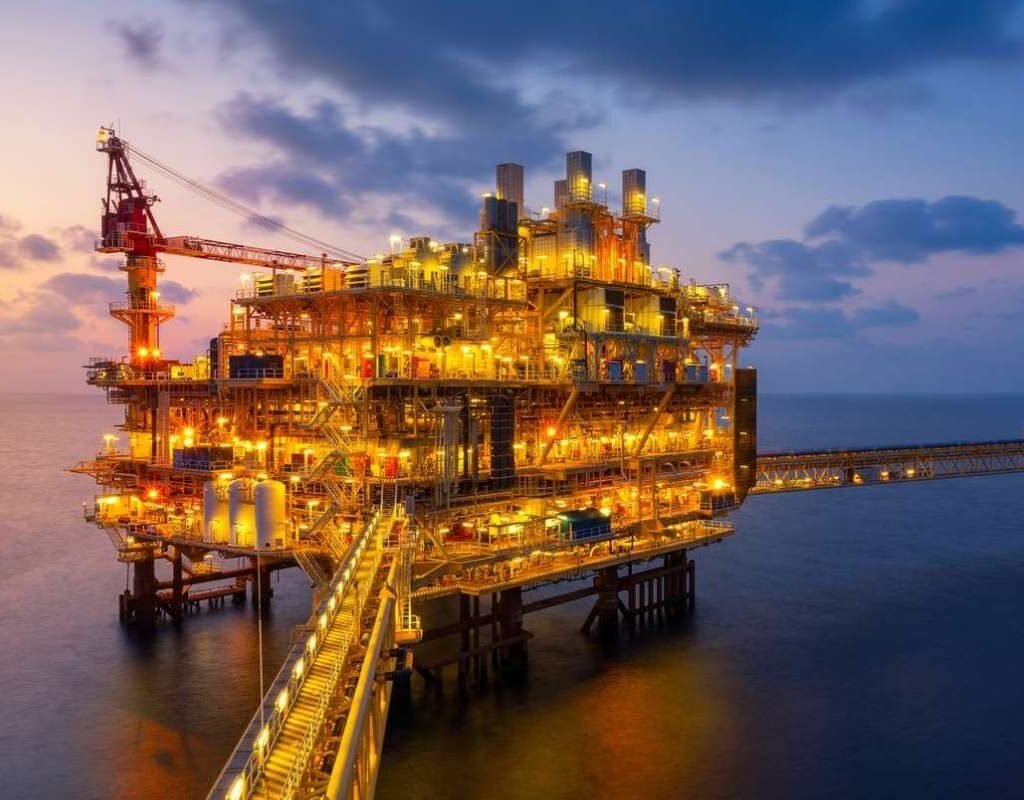Sometimes it feels like a country could dominate the globe with nothing more than a viral joke and some snacks. That would be fun, but real global power doesn’t work that way. The most powerful countries in the world are not at the top because their leaders win small competitions or because their food is famous.
Instead, these nations hold serious influence. They have strong militaries with advanced fighter jets, experts in technology who push innovation forward, and huge financial resources that allow them to lead in trade, infrastructure, and diplomacy. Their power is not about show; it’s about the ability to make big moves on the global stage.
These top nations combine economic strength, political influence, military force, and cultural reach to maintain their positions in 2025. They don’t need flashy symbols or superhero costumes. What they rely on is careful planning, smart strategies, and consistent global presence.
Most Powerful Countries in The World in 2025
Below is the basis on which the countries have been ranked in the table “Most Powerful Countries in the World in 2025”:
| Rank | Country | Best Countries Overall | GDP (USD) | Population |
| 1 | United States | #1 | $30.34 trillion | 345 million |
| 2 | China | #2 | $19.53 trillion | 1.42 billion |
| 3 | Russia | #3 | $2.2 trillion | 144 million |
| 4 | United Kingdom | #4 | $3.73 trillion | 69 million |
| 5 | Germany | #5 | $4.92 trillion | 84 million |
| 6 | South Korea | #6 | $1.95 trillion | 51 million |
| 7 | France | #7 | $3.28 trillion | 66 million |
| 8 | Japan | #8 | $4.39 trillion | 123 million |
| 9 | Saudi Arabia | #9 | $1.14 trillion | 34 million |
| 10 | Israel | #10 | $0.551 trillion | 9.4 million |
| 11 | United Arab Emirates | #11 | $548.6 – $558.6 Billion | 11.2 Million |
| 12 | India | – | $4.19 trillion | 1.43 billion |
Most Powerful Countries in the World Are Ranked Based on These 7 Pillars (2025):
- Strong Economy – High GDP, big investments, trusted currency.
- Military Strength – Modern weapons, skilled forces, global reach.
- Technology – Leadership in AI, robotics, and innovation.
- Political Influence – Strong diplomacy and international alliances.
- Cultural Impact – Global reach through movies, music, food, and sports.
- Population Power – Large, skilled, and innovative workforce.
- Resources – Control of vital energy, minerals, and food.
Full Details on Each Pillar Are Provided in the Section Below
The Most Powerful Countries in The World (2025)

1. United States
Capital: Washington, D.C.
Region: North America
GDP: $30.34 trillion
GDP per capita (PPP): ~ $80,000
Population: 345 million
Area: ~9.8 million km²
Economic Power
The United States has the largest economy in the world and most powerful countries in the world, which is built on a diverse base of finance, technology, manufacturing, and natural resources. It is home to the U.S. dollar, the world’s primary reserve currency, which gives it unmatched financial influence. The country hosts the largest number of Fortune 500 companies, making it a hub for innovation, investment, and global trade. Its domestic market is vast, with high consumer spending driving growth.
Military Strength
The U.S. defense budget is the highest in the world, exceeding $850 billion in 2025. It maintains a global military presence with hundreds of overseas bases, advanced aircraft carriers, stealth technology, and a nuclear arsenal. Its military operates effectively across land, sea, air, cyber, and space, ensuring unmatched global reach.
Technological Advancements
The U.S. leads in cutting-edge research and development, driven by Silicon Valley tech giants, world-class universities like MIT and Stanford, and government agencies such as NASA. It excels in AI, biotechnology, aerospace, and clean energy innovation.
2. China
Capital: Beijing
Region: Asia
GDP: $19.53 trillion
GDP per capita (PPP): ~ $24,500
Population: 1.42 billion
Area: ~9.6 million km²
Economic Power
China is the world’s second-largest economy and a manufacturing powerhouse. It dominates global exports, especially in electronics, machinery, and consumer goods. Its Belt and Road Initiative expands influence through infrastructure investments in Asia, Africa, and Europe. Despite a recent slowdown, its domestic market and industrial capacity remain huge.
Military Strength
China’s military modernization includes expanding its naval fleet, developing hypersonic weapons, and growing its nuclear arsenal. The People’s Liberation Army Navy (PLAN) now has one of the largest active fleets in the world, strengthening control in the South China Sea.
Technological Advancements
China leads in 5G deployment, renewable energy, and AI research. It is pushing electric vehicle production, quantum computing, and space exploration, positioning itself as a tech competitor to the United States.
3. Russia

Capital: Moscow
Region: Eurasia
GDP: $2.2 trillion
GDP per capita (PPP): ~ $44,000
Population: 144 million
Area: ~17 million km²
Economic Power
Russia’s economy is heavily resource-driven, exporting vast quantities of oil, natural gas, and minerals. It remains one of the top global energy suppliers, giving it leverage over many importing nations, especially in Europe and Asia.
Military Strength
Russia has one of the largest nuclear stockpiles in the world. Its military maintains strong capabilities in missile technology, air defense, and armored warfare. Despite economic sanctions, it continues investing in advanced weapon systems.
Technological Advancements
Russia has a long history of innovation in aerospace and defense technologies. It continues to excel in nuclear energy, cyber warfare, and space exploration.
4. United Kingdom
Capital: London
Region: Europe
GDP: $3.73 trillion
GDP per capita (PPP): ~ $59,000
Population: 69 million
Area: ~243,000 km²
Economic Power
The UK is a global financial hub, centered in London. Its economy thrives on services, banking, insurance, pharmaceuticals, and creative industries. It maintains strong trade and investment ties worldwide.
Military Strength
As a nuclear-armed nation and permanent UN Security Council member, the UK plays a vital role in NATO. It maintains advanced naval and air capabilities.
Technological Advancements
The UK is strong in aerospace, life sciences, and renewable energy research, supported by top universities like Oxford and Cambridge.
5. Germany
Capital: Berlin
Region: Europe
GDP: $4.92 trillion
GDP per capita (PPP): ~ $69,000
Population: 84 million
Area: ~357,000 km²
Economic Power
Germany is Europe’s largest economy and an industrial powerhouse. It leads in automotive engineering, chemicals, and precision manufacturing. As a key EU member, it influences European trade policy.
Military Strength
Germany has a moderately sized but well-equipped military. Its NATO commitments and growing defense budget aim to strengthen its role in European security.
Technological Advancements
Germany is a leader in green technologies, advanced engineering, and sustainable manufacturing.
6. South Korea

Capital: Seoul
Region: Asia
GDP: $1.95 trillion
GDP per capita (PPP): ~ $54,000
Population: 51 million
Area: ~100,000 km²
Economic Power
South Korea thrives on exports, especially electronics, automobiles, and ships. Companies like Samsung, Hyundai, and LG dominate their industries globally.
Military Strength
It maintains a highly advanced military, with compulsory service ensuring a strong manpower base. Its defense industry produces sophisticated weaponry.
Technological Advancements
South Korea leads the world in semiconductor production, 5G infrastructure, and robotics.
7. France
Capital: Paris
Region: Europe
GDP: $3.28 trillion
GDP per capita (PPP): ~ $61,000
Population: 66 million
Area: ~643,000 km²
Economic Power
France is a global center for luxury goods, aerospace, and agriculture. It benefits from strong tourism and exports of wine, fashion, and technology.
Military Strength
It is one of the few nuclear powers and has robust naval, air, and land forces. France is active in NATO and global peacekeeping.
Technological Advancements
France excels in space technology, high-speed rail, and renewable energy.
8. Japan
Capital: Tokyo
Region: Asia
GDP: $4.39 trillion
GDP per capita (PPP): ~ $50,000
Population: 123 million
Area: ~378,000 km²
Economic Power
Japan’s economy is export-driven, focused on automobiles, robotics, and electronics. It is known for quality manufacturing and innovation.
Military Strength
Japan maintains a defensive military force, but recent policy changes allow greater international cooperation.
Technological Advancements
Japan leads in robotics, precision manufacturing, and environmental technology.
9. Saudi Arabia
Capital: Riyadh
Region: Middle East
GDP: $1.14 trillion
GDP per capita (PPP): ~ $55,000
Population: 34 million
Area: ~2.15 million km²
Economic Power
Saudi Arabia dominates the global oil market and is diversifying through its Vision 2030 plan, investing in tourism, technology, and finance.
Military Strength
It spends heavily on advanced weaponry and has significant influence in the Gulf region.
Technological Advancements
Investments in renewable energy, AI, and smart cities are reshaping its economy.
10. Israel

Capital: Jerusalem
Region: Asia (Middle East)
GDP: $0.551 trillion
GDP per capita (PPP): ~ $53,000
Population: 9.4 million
Area: ~22,000 km²
Economic Power
Israel is called the “Startup Nation” for its high density of tech companies and R&D centers.
Military Strength
It has one of the most advanced military forces per capita, with expertise in intelligence and missile defense.
Technological Advancements
Israel excels in cybersecurity, biotechnology, and AI research.
11. United Arab Emirates
Capital: Abu Dhabi
Region: Middle East
GDP: $548.6-$558.6billion
GDP per capita (PPP): ~$87,000
Population: 11.2million
Area: ~83,600km²
Economic Power
The UAE’s economy grows strongly, with most income now coming from non-oil sectors like tourism, finance, and tech. It remains an important global trade center and has many big trade agreements.
Military Strength
The UAE has a modern, well-equipped military with about 65,000 active personnel. Its forces use advanced technology and have a strong reputation in the Middle East.
Technological Advancements
The UAE is becoming a global leader in tech, focusing on AI, cybersecurity, smart cities, and 5G. Tech industry revenue is rising fast, with major investment attracting international companies.
12. India (12th but rising)
Capital: New Delhi
Region: Asia
GDP: $4.19 trillion
GDP per capita (PPP): ~ $12,100
Population: 1.43 billion
Area: ~3.29 million km²
Economic Power
India is one of the fastest-growing economies, with strengths in services, IT, pharmaceuticals, and manufacturing. Its large young workforce supports rapid development.
Military Strength
It has the fourth-largest military in the world and is a nuclear power. Its defense industry is expanding.
Technological Advancements
India is advancing in space exploration, IT services, and digital infrastructure.
Women’s Role in the World’s Most Powerful Countries (2025)
1. United States
Political Leadership: Women have held top positions like Vice President (Kamala Harris) and House Speaker, shaping domestic and foreign policies.
Economic Influence: Women lead Fortune 500 companies like General Motors (Mary Barra) and CVS Health (Karen Lynch), contributing to the $30.34 trillion GDP.
Military Role: Women serve in combat roles, intelligence, and cyber defense, helping maintain the U.S.’s unmatched global reach.
Tech Impact: Women innovators in Silicon Valley drive advancements in AI, biotech, and clean energy.
2. China
Economic Role: Millions of women work in manufacturing, tech, and entrepreneurship, supporting China’s status as the world’s factory.
Political Space: Women like Sun Chunlan (Vice Premier) have had significant policy influence.
Tech Growth: Female scientists contribute to China’s rise in AI, green energy, and space programs.
Challenges: Gender pay gaps and rural women’s access to higher education remain areas for reform.
3. Russia
Resource Sectors: Women work in engineering, oil, and energy administration, contributing to resource-based GDP.
Defense & Space: Female astronauts and defense scientists uphold Russia’s legacy in space and military tech.
Cultural Influence: Russian women lead in literature, sports, and arts, boosting soft power.
4. United Kingdom
Leadership History: Produced women leaders like Margaret Thatcher and Theresa May, influencing global politics.
Economic Role: Women in finance, law, and media help sustain London’s status as a global hub.
STEM Growth: Increasing female representation in the aerospace and biotech industries.
5. Germany
Political Role: Angela Merkel’s 16-year tenure elevated Germany’s influence.
Industrial Power: Female engineers and scientists contribute to Germany’s dominance in automotive and green tech.
EU Diplomacy: Women in foreign affairs strengthen Germany’s leadership in Europe.
6. South Korea
Cultural Power: K-pop idols, female filmmakers, and entrepreneurs influence global culture and exports.
Tech Contribution: Women in semiconductor and 5G industries bolster South Korea’s tech supremacy.
Military Service: While mandatory service is male-only, women serve in specialized defense and cyber units.
7. France
Luxury Industry: Women lead global fashion houses like Chanel and Dior, shaping France’s economic and cultural identity.
Politics: Female ministers influence energy, defense, and education policies.
STEM Innovations: Women in nuclear energy and aerospace research drive technological progress.
8. Japan
Tech Excellence: Women engineers and researchers play key roles in robotics and manufacturing.
Economic Participation: Increasing initiatives encourage more women in the workforce amid aging demographics.
Cultural Soft Power: Female artists and authors boost Japan’s global image.
9. Saudi Arabia
Policy Change: Vision 2030 reforms allow women to drive, travel independently, and join various sectors.
Economic Role: Women enter tech, healthcare, and entrepreneurship at unprecedented rates.
Leadership Growth: First female ambassadors and senior executives are reshaping perceptions.
10. United Arab Emirates
Empowerment Progress: The UAE has made big changes to support women’s rights and equality across all parts of society.
Economic Role: More women work in government, business, technology, and leadership roles than ever before.
Leadership Growth: Women hold many important positions in both public and private sectors, helping shape the country’s future.
11. Israel
Defense: Women serve in elite military units and intelligence divisions.
Tech Leadership: Female founders lead in cybersecurity, biotech, and AI startups.
Global Impact: Women scientists and diplomats enhance Israel’s innovation-driven image.
12. India (Rising Power)
Political History: Leaders like Indira Gandhi set precedents for female political influence.
Economic Role: Women entrepreneurs in IT, textiles, and services drive India’s growth.
STEM Impact: Female scientists contribute to ISRO’s space missions and AI advancements.
Challenges: Gender equality in rural education and workforce participation remains a focus.
What Makes a Country Powerful? The 7 Pillars of Global Power (2025)

“A great nation cannot abandon its responsibilities. Responsibilities abandoned today return as more acute crises tomorrow.”
Forbes Quotes
Here are the 7 Pillars of Global Power,
1. Economic Muscle
A country’s economy is one of its biggest sources of power. Nations with large GDPs can invest more in industries, infrastructure, and public services. Strong trade networks allow them to influence markets worldwide. Currency strength, like the U.S. dollar, means its money is trusted and used globally, making transactions easier and boosting its financial dominance.
2. Military Force
Military strength is not just about the number of soldiers; it’s about quality and capability. High military spending leads to advanced weapons, strong defense systems, and modern equipment. Nuclear capability adds deterrence power, discouraging attacks. Countries that can send troops and resources across the globe have a major advantage in protecting their interests and helping allies.
3. Technological Edge
Nations that lead in research and development (R&D) often stay ahead in global competition. Innovations in artificial intelligence, robotics, biotech, and digital infrastructure give them an upper hand. Having strong tech industries also makes them more self-reliant and attractive for investments.
4. Political Influence
Some countries shape world events without firing a single shot. This comes from political diplomacy and involvement in global institutions like the UN, NATO, or the G20. Their soft power, such as building alliances, brokering peace, and setting international rules, helps them maintain influence without relying solely on force.
5. Cultural Impact
A country’s culture can be as influential as its economy or army. Through movies, music, fashion, and sports, nations can shape how people think and live. Cultural exports like Hollywood, K-pop, or global food brands increase prestige and strengthen a country’s image around the world.
6. Demographic Weight
The size and skill of a country’s population matter a lot. A large labor force supports economic growth, while well-educated citizens drive innovation. Most powerful countries in the world with youthful populations often have more energy and adaptability, while nations with skilled workers can attract industries that need expertise.
7. Resource Access
Control over vital resources like oil, natural gas, rare minerals, and fertile land is a huge power booster. Energy fuels industries, rare minerals are essential for tech products, and secure food production ensures stability. Countries with these resources can influence trade and global prices.
How These Factors Declare the Most Powerful Countries in the World?
These seven pillars work in sync. A commanding economy funds military and tech growth. Military security boosts confidence for innovation. A strong diplomatic hand cements alliances, while cultural exports win global fans. The most powerful countries in the world in 2025 show that maintaining balance among these pillars is the key to resilient, far-reaching influence.
Unique, Verified Facts
- The United States and China maintain their status as the two most powerful countries in the world, with a combined share representing over 40% of global GDP.
- Saudi Arabia is the only country in the Middle East to make the top 10 list, thanks to its oil reserves and investments in technology and tourism.
- Japan’s population is aging, but its cutting-edge robotics and semiconductor industries keep it a technological and economic powerhouse.
- India has vaulted into the top five global economies but ranks outside the top 10 in overall power due to military and tech disparities.
Conclusion
Did you expect superheroes? The most powerful countries in the world aren’t fueled by capes or comic book mystique. Their secret? Smart strategies, strong alliances, and big leaps in technology and industry, plus some serious military muscle. The competition among the most powerful countries in the world keeps the globe spinning with innovation, rivalry, and, occasionally, Instagrammable summits. Let’s keep watching who stays on top, because in the theatre of power, there’s never a dull moment.
Thanks for reading
see next
“Budget-Friendly And Best Countries to Visit in South America in 2025“

-.jpg)










